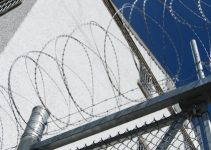How to File Bankruptcy in Texas
Contents
Texas has two different types of bankruptcy for consumers who cannot find their way out of debt in a maximum of five years. Other types of bankruptcy are available for family-owned farms and business corporations. Not all those who apply for bankruptcy are granted bankruptcy from the court.
Chapter Thirteen bankruptcy can be re-filed any time after the entire process has been completed. Chapter Seven bankruptcy cannot be re-filed until six years has passed after the date of the first bankruptcy’s completion. A husband and wife may petition for bankruptcy in a joint petition or a single individual may petition for bankruptcy on his or her own.
Chapter Thirteen Bankruptcy
Chapter Thirteen bankruptcy includes the relieving of debts through personal income. Those that qualify for this chapter of bankruptcy will have a repayment plan personally created for them by the court. The court will evaluate how much income is possible and how much debt is present.
A payment plan will then be created for how much is necessary to be paid each month in order to have the debt paid off in no more than five years. At times, based on the income and the debt amount, the debt can be paid off in three years.
Chapter Seven Bankruptcy
Chapter Seven bankruptcy is designed to eliminate debts through the sale of personal property and assets. The court will assign a trustee to the case. He or she will evaluate the values of the property and will liquidate all the non-exempt property. This property is whatever assets are not necessary to daily life.
The compensation will then be used to pay off creditors. Before all the creditors are paid, the trustee will be paid through the compensation made. The entire Chapter Seven bankruptcy process can be completed in six months.
Texas Bankruptcy Exceptions
Chapter Seven bankruptcy calls for the liquidation of non-exempt property. Texas has set the kinds of property that are noted as exempt into different asset categories. These categories include personal property, homestead, insurance, pension, miscellaneous, tools of trade, public benefits, and wages.
Each category includes various exemptions at different values. Generally each property is required to be under a certain amount in order to be deemed exempt.
Homestead assets can include one acre of property in town, one hundred acres out of town boundaries, and proceeding sales after six months. Personal property assets can include health aids, burial plots, food, jewelry with values under the twenty-five percent exemption, two horses, heirlooms, sports equipment, and motor vehicles.
Insurance assets can include Texas state college employee benefits, life, health, church benefits plan benefits, accident benefits, and retired public school employees. The entire miscellaneous asset category includes business partnership property. Pension assets can include judges, firefighters, police officers, county employees, district employees, and teachers.
Public benefits include workers’ compensation, medication assistance, crime victims’ award, unemployment compensation, and public assistance. Wages include earned yet unpaid wages and commissions up to seventy-five percent that are yet to be paid. Tools of trade assets include framing equipment, tools, ranching vehicles, boats, and books.
Using Credit Cards Before Filing Bankruptcy May Be Treated as Fraud
If you are thinking about filing for bankruptcy, then you should stop using your available credit cards. Certain purchases and cash advances taken right before filing can be treated as fraudulent, and ruled non-dischargeable if a creditor files an objection.
As a general rule, if you purchase a total of $650.00 in luxury goods (i.e. non-essential purchases related to living expenses) within 90 days of filing bankruptcy, or $925.00 in cash advances within 70 days, then there is the possibility that your purchases will be treated as fraud.
It should be noted that a creditor can file an objection to discharge of a debt for different reasons. It does not happen often, but if it does they will be required to prove in court that you acted with the intent to defraud them. This can be difficult to prove because it puts the burden of proof on the creditor. However, if a debtor makes any of the purchases or cash advances listed above, then the debtor will be assumed to have acted fraudulently, and the debtor will have the burden to prove it was not fraud. This can be difficult to prove, as well.
Bottom line: just stop using credit cards or taking cash advances prior to filing bankruptcy, and you can avoid the entire issue.




What are the long-term consequences of filing for bankruptcy in Texas, both financially and emotionally, and how can individuals navigate these challenges to rebuild their lives after bankruptcy?